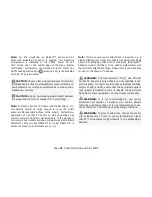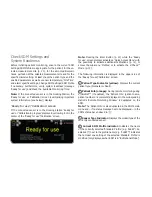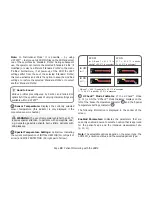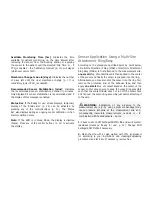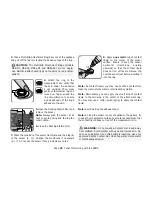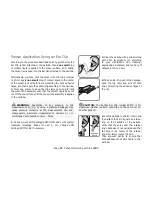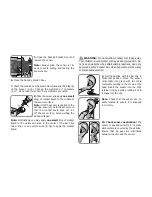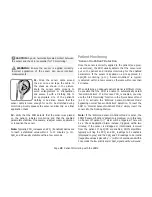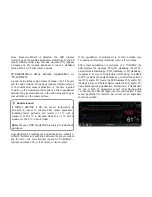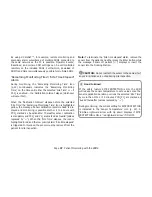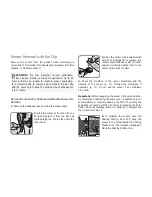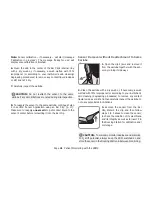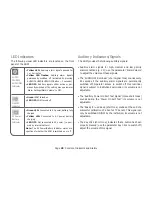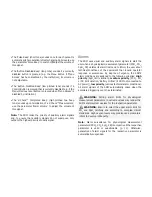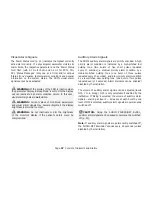
By using the menu-parameter ‘Heating Power Mode’ the op-
erator can select between the display of the ‘Absolute Heating
Power’ (AHP), the ‘Relative Heating Power’ (RHP), or disable
the display of the heating power. AHP and RHP values are both
displayed in Milliwatts (mW).
In ‘RHP-Mode’, deviations of the current heating power from a
stored RHP-reference value are displayed as plus or minus RHP
values once the sensor is stabilized on the skin (‘plus’ if the
current heating power is higher than the RHP-reference value,
‘minus’ if lower, and ‘0’ if identical). On most measurement
screens, RHP readings are – as the AHP readings – displayed
in the ‘Heating Power Icon’ (p.
48
). On certain measurement
screens, however, the RHP-value is displayed underneath the
PCO
2
or PO
2
value and the RHP online trend is depicted under-
neath the PCO
2
or PO
2
online trend.
The RHP-reference value (‘408’ in this example) and the time
that has elapsed since it has been determined/set (‘00:16’ in
this example) are displayed underneath the RHP online trend.
The dashed horizontal center-line in the RHP online trend
corresponds to a RHP of 0 mW and reflects the RHP-reference
value. RHP values below/above the center-line correspond to
episodes during which the sensor required less/more power to
maintain the sensor temperature than the AHP-reference value.
At constant ambient temperature, consequently, RHP values
below/above the center-line may indicate episodes with a
decreased/increased local skin blood flow beneath the sensor site.
Keeping in mind the possible influence of local skin blood
flow fluctuations on transcutaneous blood gases (p.
6
), it
is understandable that an abrupt change of transcutaneous
blood gases coupled with a significant change of RHP readings
may indicate a change in local skin blood flow, while abrupt
changes of transcutaneous blood gases unaccompanied by a
significant change of RHP readings may indicate consistent
blood flow but a change in arterial blood gases. Providing
RHP online trends underneath PCO
2
online trends or PO
2
online trends, consequently, permits the clinicians to assess
at a glance whether a change of PCO
2
and/or PO
2
reflects a
corresponding change of the respective arterial blood gases or
is caused or influenced by a significant change of the local skin
blood flow beneath the sensor site.
If in RHP-mode the sensor is applied to the patient when no
RHP-reference value is yet available, the SDM automatically
determines the RHP-reference value once the sensor is stabi-
lized on the skin (which is typically the case 5 to 10 minutes
after sensor application).


